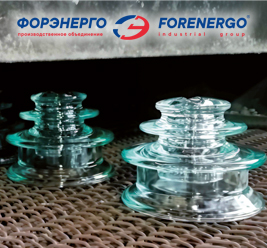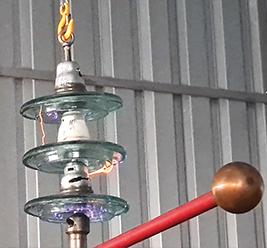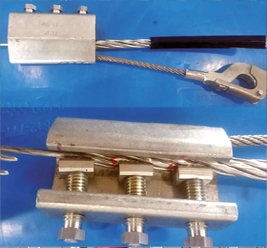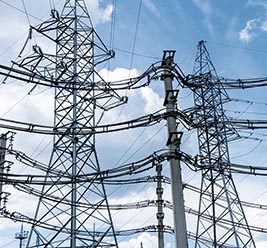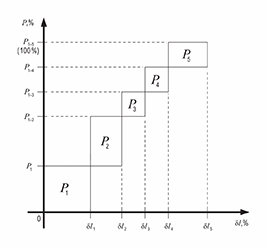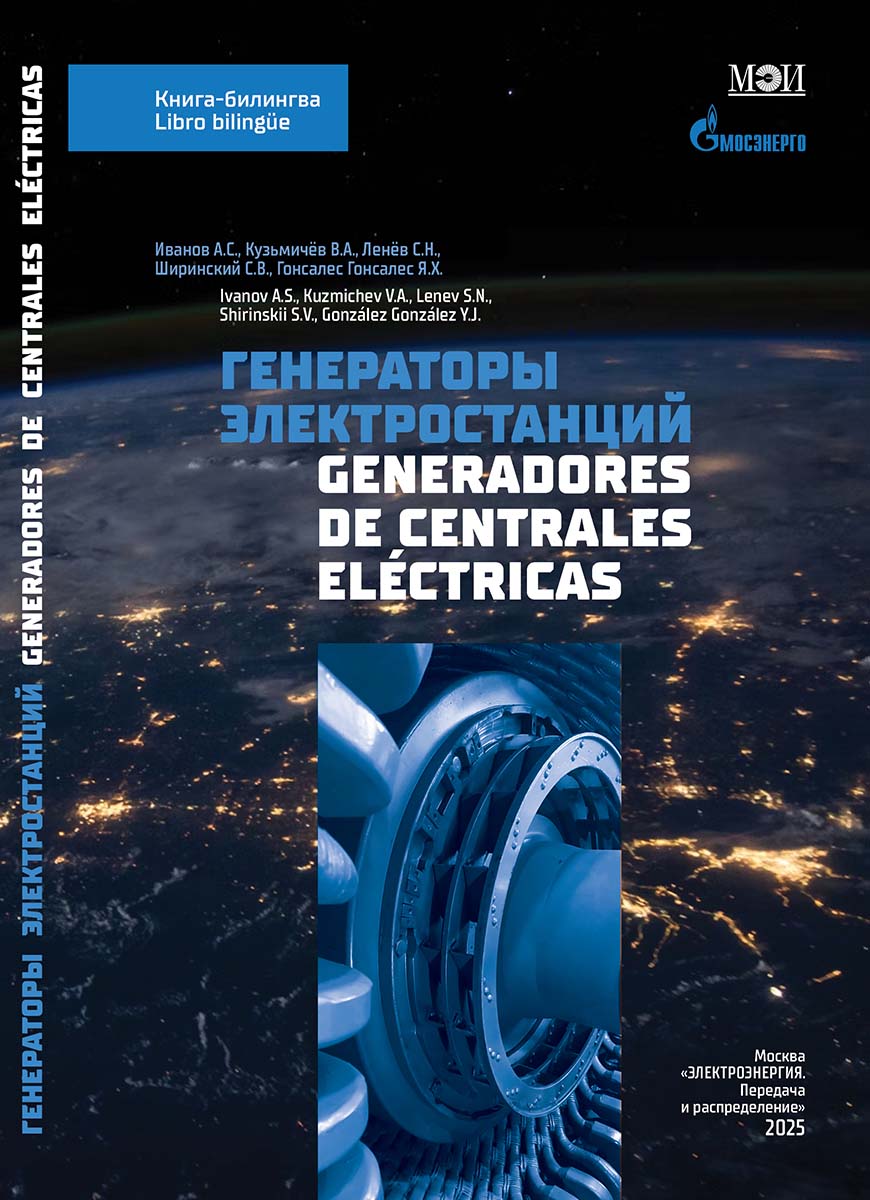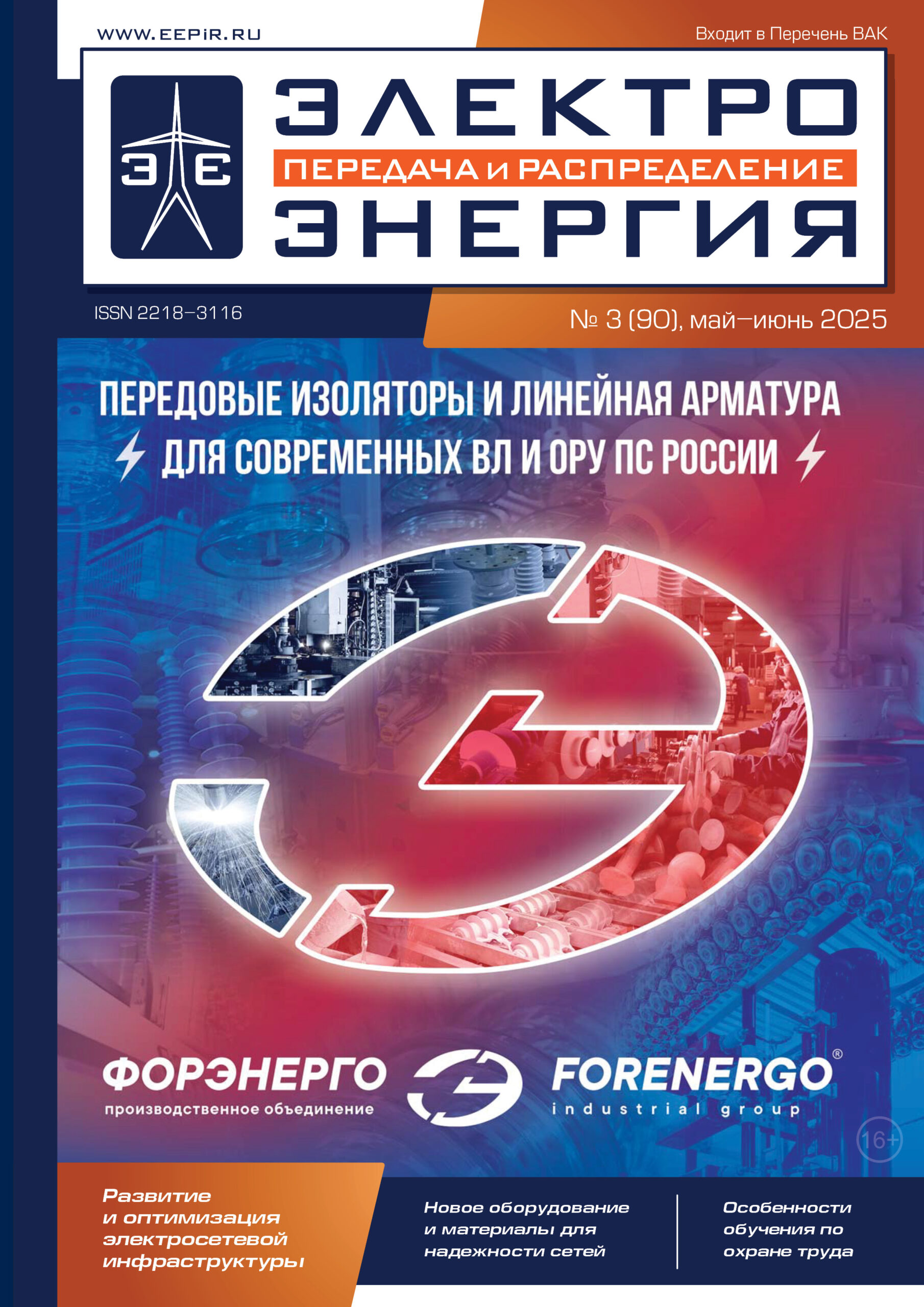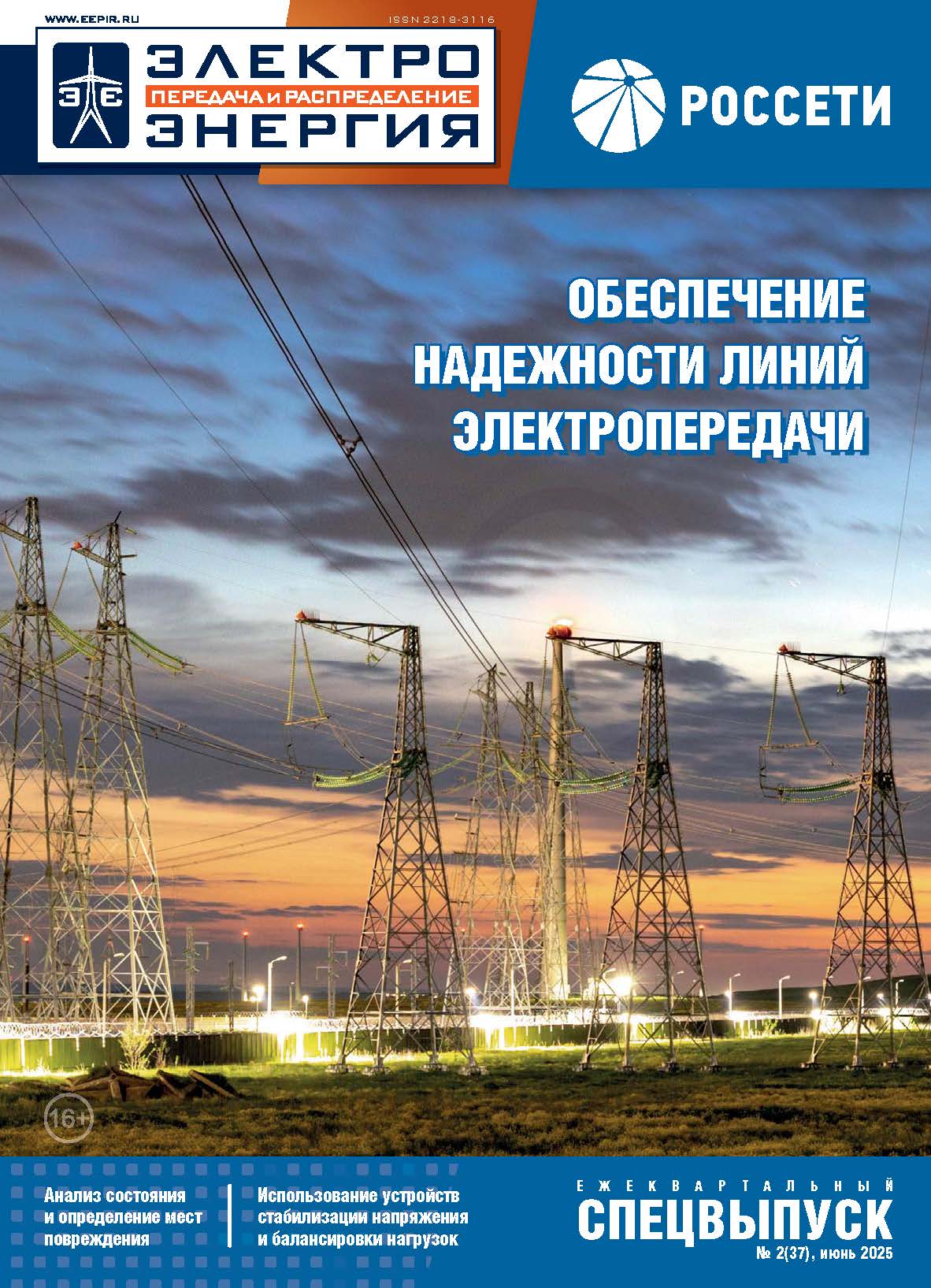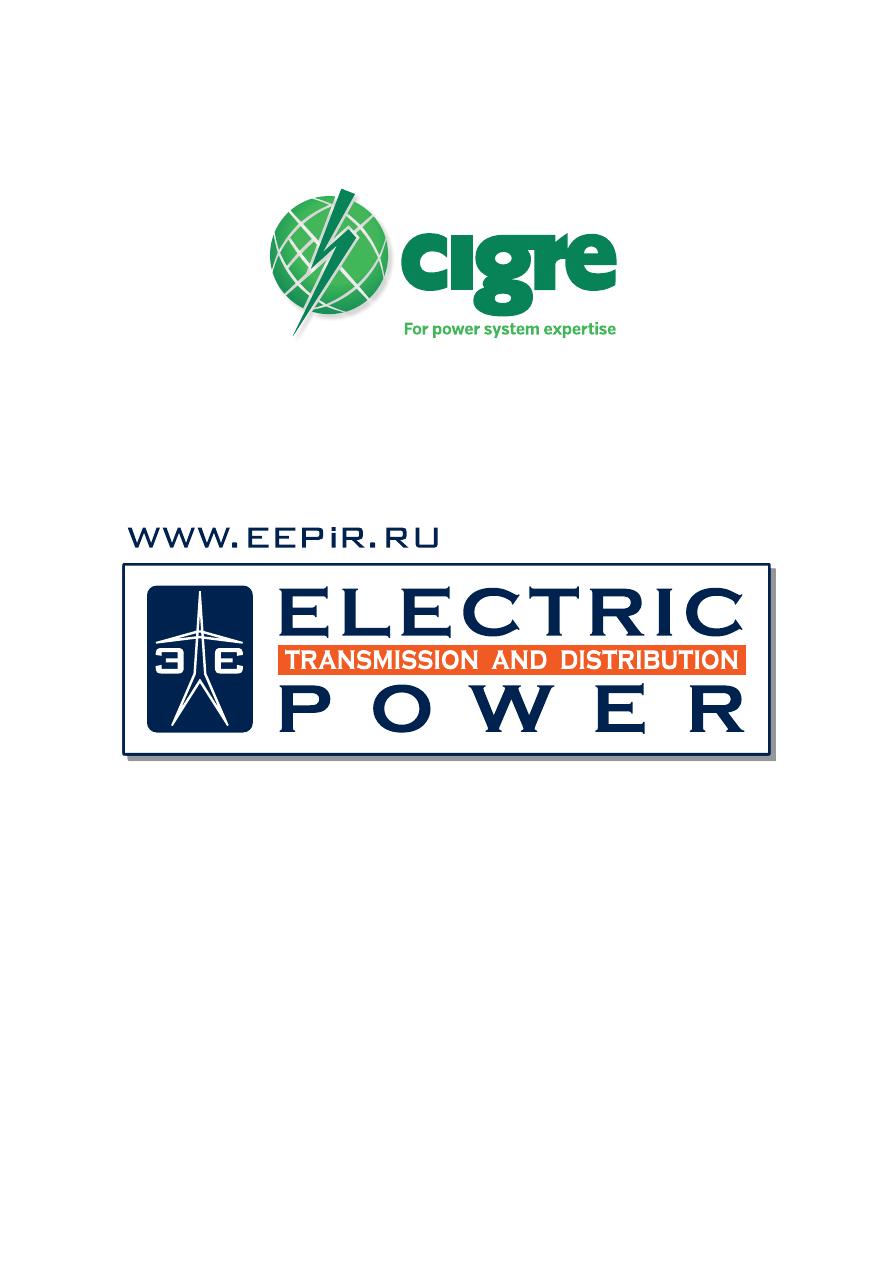
The MAIN JOURNAL for POWER GRID SPECIALISTS in RUSSIA
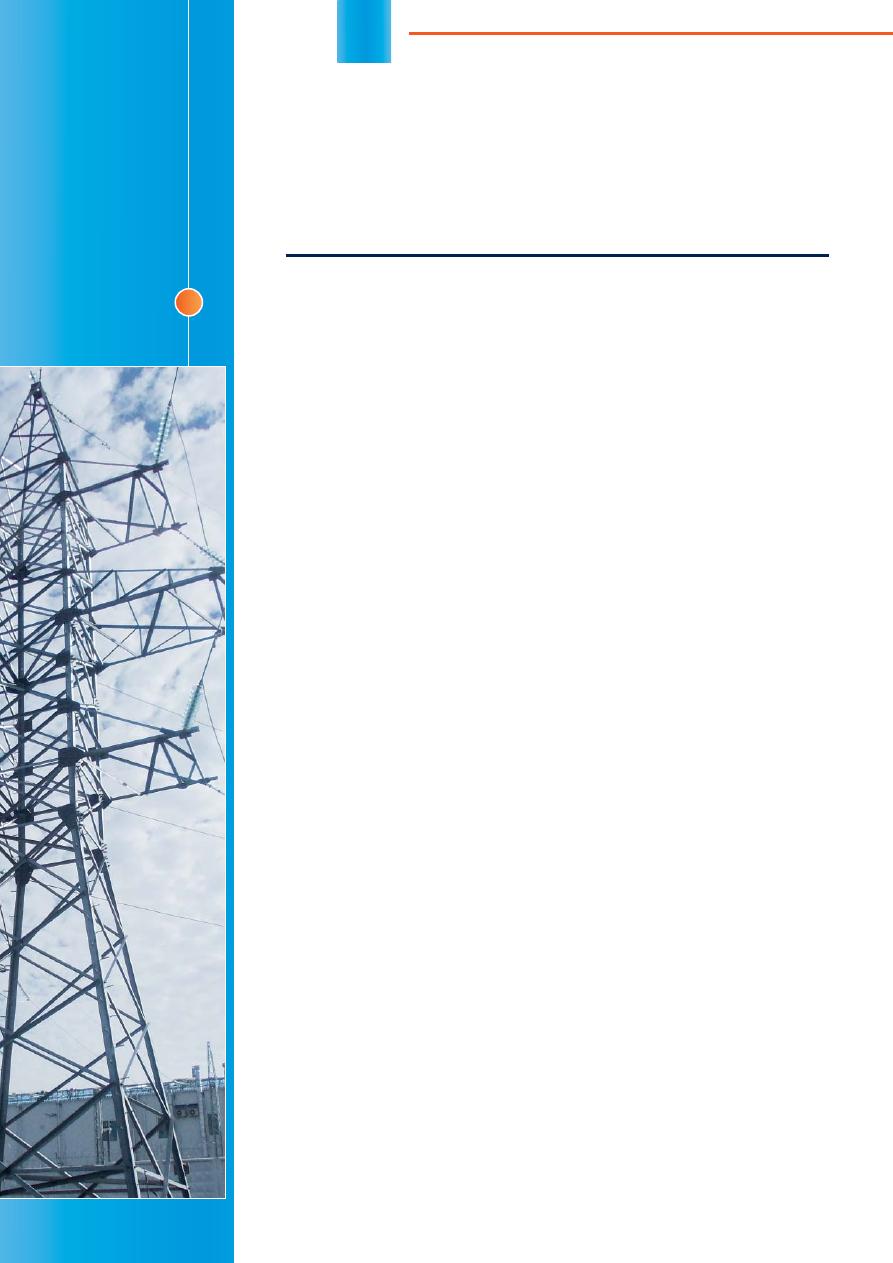
34
Optimal Solutions
for Power Grid
Development Problems
Victor FOKIN,
Director of Energoservis,
LLC
Vasily KURYANOV,
Ph.D., Head of Power and
Electrical Engineering
Department, National
Research University
"Moscow Power
Engineering Institute"
Lyudmila KUSHCH,
Ph.D., Associate Professor
of Power and Electrical
Engineering Department,
National Research
University "Moscow Power
Engineering Institute"
Alexander
MERZLYAKOV,
Head of Composite
Materials Department,
Center for Composite
Materials and Super-
conductivity, Administration
of Innovative Equipment
and Energy Ef
fi
ciency,
JSC STC FGC UES
In the conditions of constant power consumption increase, the
problem of optimizing long-distance energy
fl
ows transmission
needs to be solved. One solution could be the creation of innova-
tive conductors providing transmission capacity enhancement
while reducing technical power losses, including corona losses.
P
roducts developed by LLC Energoservis
and JSC Severstal are compacted conduc-
tors characterized by increased mechanical
strength and current load. In comparison
with ordinary conductors, the compacted conduc-
tors are twisted and constricted by means of plastic
deformation. As a result, the compacted conductor
has a higher density in the cross section and con-
ductive electrical contacts between the wires. ASHS
and ASHT conductors (high-strength and high-tem-
perature steel-aluminum conductors) [2, 5, 7] are
certi
fi
ed for use at power transmission lines by PJSC
FGC UES interdepartmental commission [1, 2]. The
conductors have passed tests on mechanical and
electrical parameters, including on corona discharge
and its intensity in accordance with IEC 61284:1997
re commendations ("Overhead lines – Requirements
and tests for
fi
tting") [3, 4, 5]. Comparative analysis of
test results is considered below.
OPTIMAL SOLUTIONS
FOR POWER GRID DEVELOPMENT
PROBLEMS
Currently, the improvement of the power grid ef
fi
-
ciency is one of the most topical issues. One solution
is the implementation of innovative conductors with
better characteristics in relation to standard steel-
aluminum conductors. Among those characteristics
are enhanced transmission capacity and mechanical
strength, as well as resistance to high temperatures,
aging and aggressive environmental in
fl
uences.
Usually, the problems of power grids development
around the world are solved by means of existing
power lines reconstruction (preferably using old trans-
mission towers). Sometimes, the reconstruction is
performed with transmission capacity enhancement.
If the reconstruction can't provide satisfactory result,
new overhead lines construction is carried out. The
use of new technologies is logical for any solution.
The conductors and overhead ground-wire cables
produced with unique plastic deformation technology
application allow to reduce price and have advanced
characteristics (the
fi
rst prize of PJSC ROSSETI for
the best implemented project in 2014). Taking into
o
v
e
r
h
e
a
d
t
r
a
n
s
m
is
s
io
n
l
in
e
s
overhead transmission lines
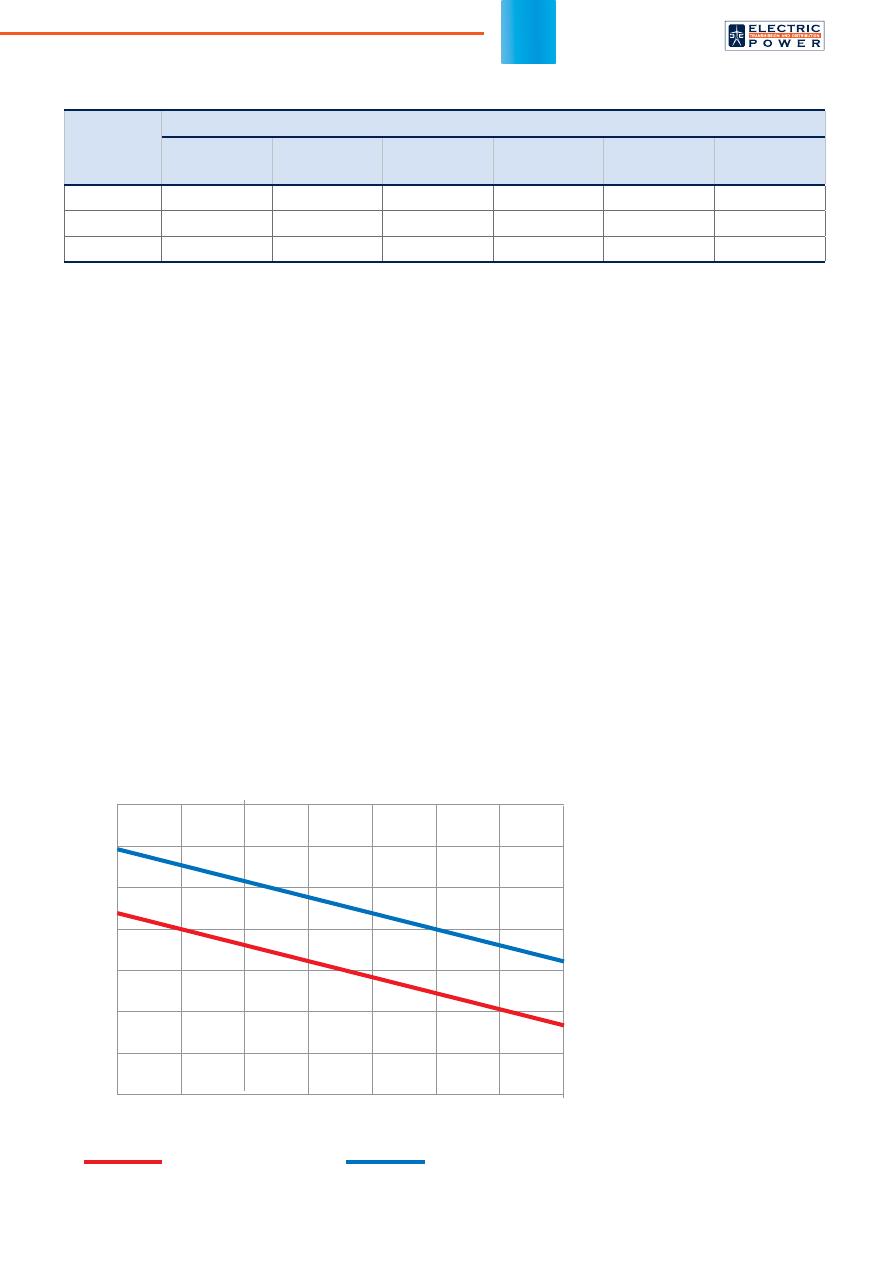
35
account the large-scale program of
transmission lines constructions and
reconstructions in Germany, France,
Italy and other EEC countries, the
use of afore-mentioned conductors
can signi
fi
cantly reduce construc-
tion costs. ROSSETI Group has al-
ready implemented 8 overhead line
projects and has installed 18000 km
of overhead ground-wire cables in
Russia. In addition, 17 overhead line
projects are under implementation.
Experimentally con
fi
rmed main
advantages of ASHS/ASHT mo-
dern conductors in comparison with
traditional steel-aluminum ones are
listed below:
– wind loads reduction;
– less susceptibility to conductor
galloping and vibrations self-
damping;
– less probability of snow adhering;
– greater mechanical strength and,
as a consequence, smaller sags
and the possibility of increasing
the distance between transmis-
sion towers;
– electrical resistance reduction;
Table 1. Wind loads for conductors with different cross-section contour depending on air
fl
ow speed
Air
fl
ow speed
v
AB
. m/s
Wind load acting on the following conductors. N/m
ASHS 128/37
(Ø15.2 mm)
ACSR 120/19
(Ø15.2 mm)
ASHS 216/33
(Ø18.5 mm)
ACSR 240/32
(Ø21.6 mm)
ASHS 277/79
(Ø22.4 mm)
ACSR 240/56
(Ø22.5 mm)
25
3.6
4.8
4.9
6.9
5.2
7.0
32
5.9
7.9
7.8
11.4
8.4
11.5
60
20.8
28.5
28.4
41.5
29.8
41.6
– corona losses reduction;
– enhanced permissible current
(for high-temperature conductor).
ASHS/ASHT conductor advan-
tages are con
fi
rmed by the results
of the research conducted by PJSC
FGC UES science and technical
center, National Research Univer-
sity "Moscow Power Engineering
Institute", Volgograd State Technical
University and other leading scien-
ti
fi
c centers.
The interactions of wind and con-
ductors depending on wind speed
and type of conductors cross-
section have been compared. The
following conductors with similar
diameters have been used for com-
parison (Table 1): ASHS 128/37 and
ACSR 120/19; ASHS 230/32 and
ACSR 240/34; ASHS 277/79 and
ACSR 240/56. There is the differ-
ence between calculated and stan-
dard wind loads, because wind pres-
sure changes (depending on relief
of the terrain), impact of span length
on wind load and intermittent wind
pressure along overhead transmis-
Figure 1. Dependence of permissible current load on ambient temperature
Ambient temperature, °C
– ACSR 258/73
– ASHT 240/39
I
per
, A
–30
–20
1600
1400
1200
1000
800
600
400
200
–10
0
10
20
30
40
T
max
= 80°C
T
max
= 150°C
sion lines are not taken into account.
Taken approach makes it possible to
more clearly determine the contribu-
tion of conductor contours to wind
load changes. The view of conduc-
tors contour after crimping was ob-
tained by modeling steel-aluminum
conductor plastic deformation pro-
cess in the Abaqus/Explicit mod-
ule of the SIMULIA/Abaqus soft-
ware (Abaqus, Inc., USA). For all
ASHS conductors aluminum wires
of outer layer are tightly adjacent to
each other without gaps. It provides
a possibility to simulate the wind
impact on a single conductor with
one external contour by means of
COMSOL Multiphysics.
As can be seen from the data
above, wind load on ASHS conduc-
tors having streamlined design is
lower by 33% on the average. Reduc-
tion of wind load makes it possible to
reduce the load on power transmis-
sion structures and to mount con-
ductors with greater transmission
capacity to existing towers during
capital repairs. Plastically crimped
wires have a number of advan-
tages, which are usually inherent in
more expensive wires from pro
fi
led
wires. According to re ference data,
the loads from ice coating action on
compacted conductors with smooth
outer surface and reduced diameter
are decreased by 3-9% compared
to standard steel-aluminum conduc-
tors of the same section [6].
It should be noted that, accord-
ing to regulatory documentation,
standard conductors are allowed
to operate when their temperatures
is up to 80-90°C. The permissible
temperature for ASHT conductors is
150°C.
Figure 1 represents the depen-
dence of permissible current load
on the air temperature (wind speed
is 1.2 m/s) for ACSR and ASHT
conductors in conditions of a maxi-
mum operating temperature of 80°C
47th CIGRE Session
Special issue, August 2018
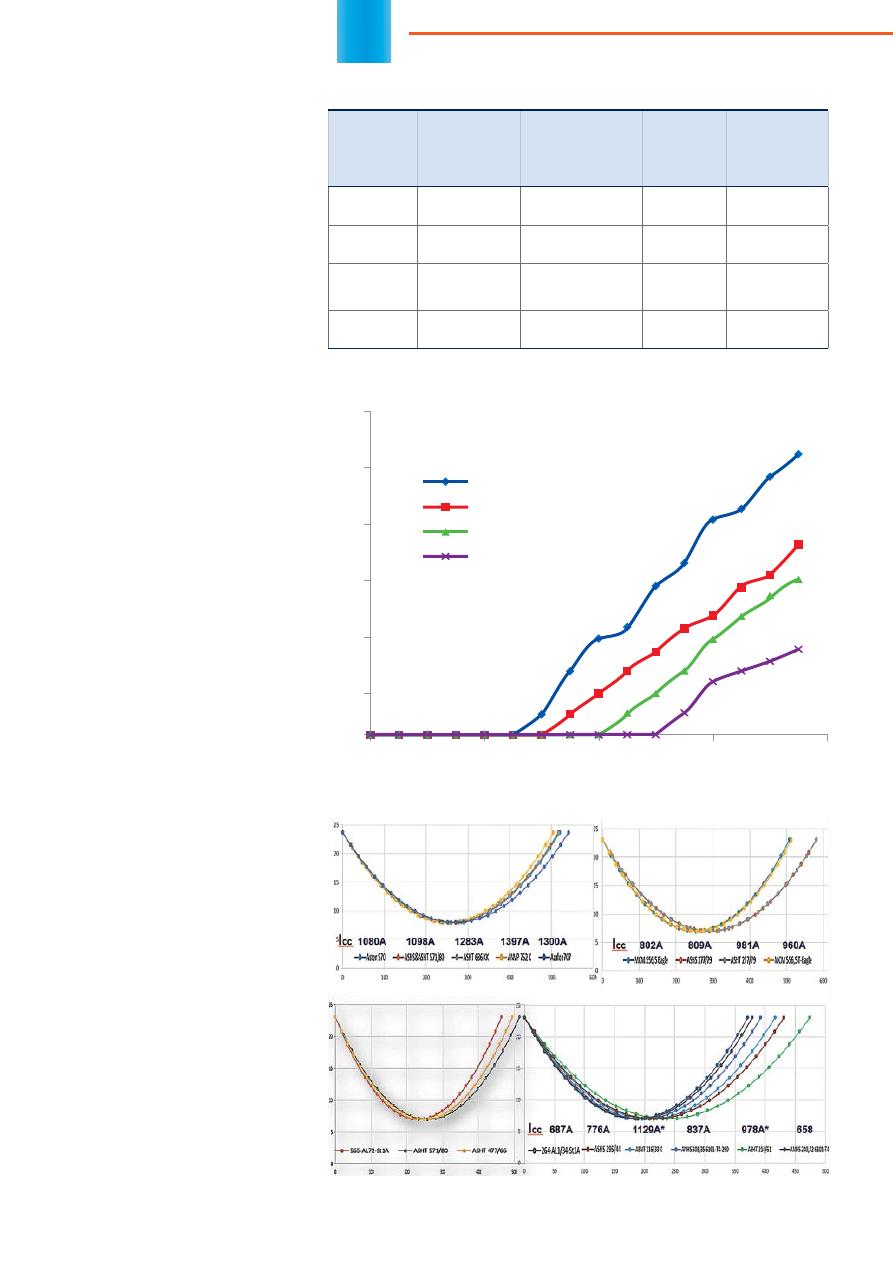
36
OVERHEAD
TRANSMISSION LINES
Figure 2. Dependence of corona discharge points number on voltage
Voltage, kV
Corona discharge points number
, pcs
– ACSR 150/19
– ACSR 185/29
– ASHS 197/55
– ACSR 220/32
30
25
20
15
10
5
0
and 150°C, respectively. Continu-
ous permissible current for high-
tempera ture conductor is 30-35%
higher than the value for standard
conductor of the same diameter.
This characteristic (Figure 1) allows
innovative conductor application
when signi
fi
cant increase of trans-
mission ca
pacity, without increas-
ing the cross-section, is required.
Also, the innovative conductor can
be used in areas with high ambient
temperatures.
THE STUDY OF CORONA
DISCHARGE OCCURRENCE
AS A FUNCTION OF VOLTAGE
An important point when using con-
ductors with less diameter is the risk
of corona losses and noise levels
enhancement. JSC STC FGC UES
conducted two studies for testing
this problem. At the
fi
rst stage, two
conductors of the same diameter
(18.8 mm) were taken for comparing
and studying corona discharge. In
total, 4 conductors have been used
within the experiment (Table 2 and
Figure 2).
The tests were carried out in ac-
cordance with IEC 61284 recom-
mendations.
Based on comparative tests re-
sults obtained at PJSC FGC UES
science and technical center, it was
established that ASHS 197/55 con-
ductor manufactured by LLC Ener-
goservis has corona discharge volt-
age (142.2 kV) by 5.7% higher than
ACSR 185/29 conductor (134.5 kV)
with the same diameter 18.8 mm.
Similar tests were carried out for
ASHS 216/33 and ACSR 240/32
conductors with different diam-
eters. Based on comparative tests
results ACSR 240/32 conductor
(Ø21.6 mm) and ASHS 216/33 con-
ductor (Ø18.5 mm) have the same
corona discharge voltage. However,
continuous permissible current of
the conductors being compared dif-
fers signi
fi
cantly (510 A for ACSR
240/32 conductor, 689 A for ASHS
216/33 conductor (
t
= 70°C), and
1040 A for ASHT 216/33 conductor
(
t
= 150°C)).
ASHS conductors have advan-
tages in terms of smaller corona
losses in comparison with ACSR
conductors of the same diameter.
Also, ASHS conductors have com-
parable corona losses in regard to
100
120
140
160
180
Figure 3. Span length with allowable clearance spans for OHL
Table 2. Technical data of the tested conductors
Conductor
model
Conductor
external
diameter, mm
Number of alumi-
num wires in the
conductor, pcs
Diameter of
outer layer
wires, mm
Con tinuous
permissible
current
ACSR
150/19
16.8
24
2.8
450
ACSR
185/29
18.8
26
2.98
510
ASHS/ASHT
197/55
18.8
28
3.45
561/943*
ACSR
240/32
21.6
24
3.6
605
*
t
max
= 70°C – high-strength steel-aluminum conductors and
t
max
= 150°C – high temperature steel-aluminum conductors
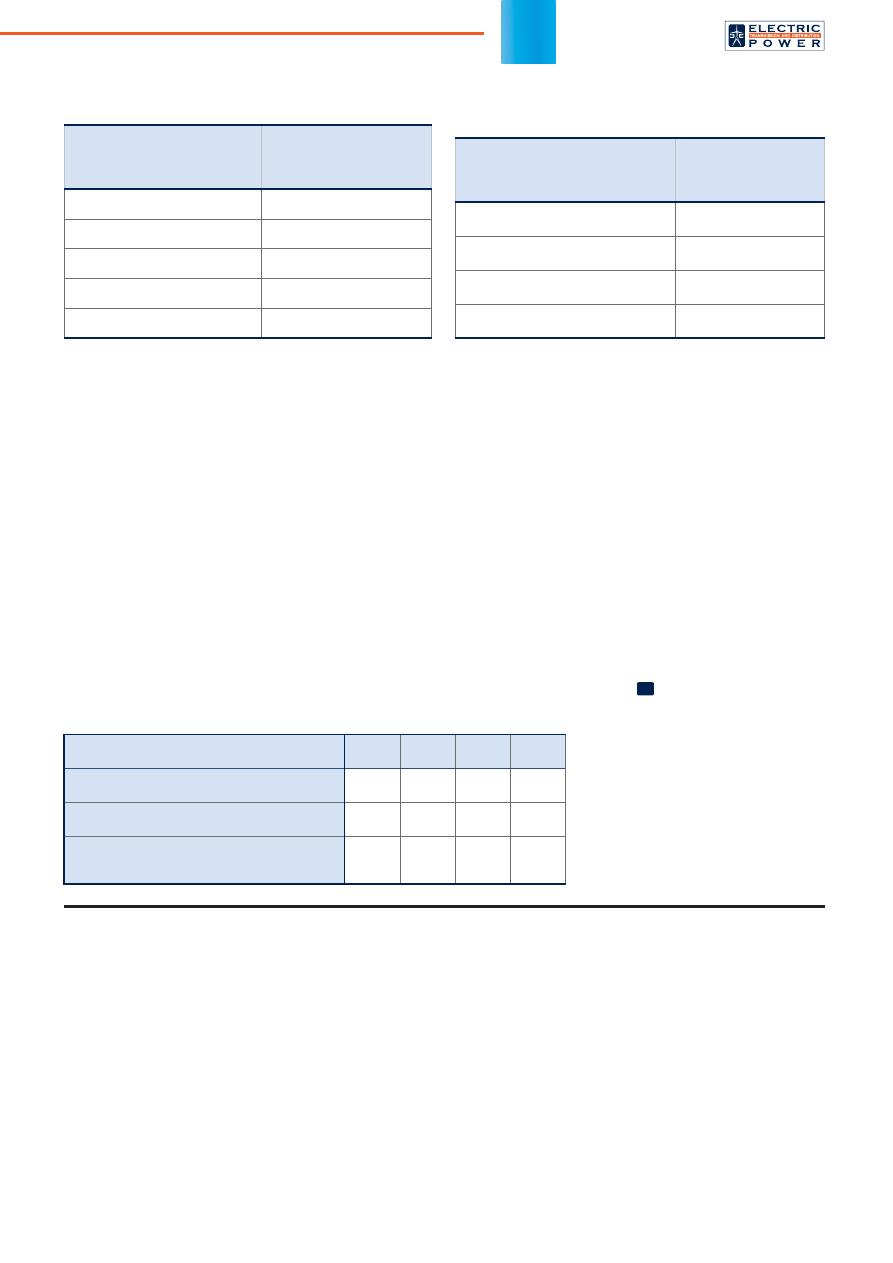
37
REFERENCES
1. Fokin V.A., Kolosov S.V. A new generation of overhead
lines: plastically deformed conductors.
ELEKTROENER-
GIYa: peredacha i raspredelenie
[ELECTRIC POWER:
Transmission and Distribution], 2014, no. 1(22), pp. 90-93.
(in Russian)
2. Gurevich L.M., Vlasov A.K., Fokin V.A. New types of plasti-
cally deformed conductors, overhead ground-wire cables
and OPGW.
ELEKTROENERGIYa: peredacha i raspre-
delenie
[ELECTRIC POWER: Transmission and Distribu-
tion], 2015, no. 5(32), pp. 66-71. (in Russian)
3. Gurevich L.M., Danenko V.F., Pronichev D.V., Trunov
M.D. Modeling of electromagnetic losses in various steel-
aluminum conductors.
ELEKTROENERGIYa: peredacha i
raspredelenie
[ELECTRIC POWER: Transmission and Dis-
tribution], 2014, no. 5(26), pp. 68-72. (in Russian)
4. Test report no. 22-06-2018. Moscow, JSC STC FGC UES
Publ., 2018. (In Russian).
5. Test report no. BO13-112016. Moscow, JSC STC FGC
UES Publ., 2016. 15 p. (In Russian).
6. Serbinovskiy G.V., Fedorov A.A.
Spravochnik po elek tro-
snab zheniyu promyshlennykh predpriyatiy. Kn. 1. Pro-
yekt no-ras chetnyye svedeniya
[Handbook on industrial
enterprises power supply. Book 1. Design and calculation
information.]. Moscow, Energiya Publ.,1986. 576 p.
7. Kuryanov V.N., Shvets E.S., Timashova L.V., Fokin V.A.
Application of domestic innovative ASHT high-tempera-
ture conductors for 110 kV overhead lines and their ef
fi
-
ciency.
Energiya edinoy seti
[Energy of uni
fi
ed grid], 2017,
no. 5(34), pp. 12–18. (in Russian)
Calculated speci
fi
c corona losses in good weather
(220 kV overhead line)
Phase construction
(conductor model;
conductor radius
r
0
, cm)
Annual average
losses change, %
ACSR 240/32;
Ø
21.6 mm
+ 26.67%
ACSR 300/39;
Ø
24.0 mm
0.00%
ACSR 330/43;
Ø
25.2 mm
–13.33%
ASHS 317/47;
Ø
22.3 mm
–13.33%
ASHS 295/44;
Ø
21.5 mm
–6.67%
Calculated speci
fi
c corona losses in good weather
(330 kV overhead line with split phase consisting
of 2 conductors with 40 cm spacing)
Phase construction
(conductor model;
conductor radius
r
0
, cm)
Annual average
losses change, %
2 × ACSR 300/39;
Ø
24.0 mm
+ 18.52%
2 × ACSR 400/51;
Ø
27.5 mm
0.00%
2 × ASHS 317/47;
Ø
22.3 mm
–7.41%
2 × ASHS 295/44;
Ø
21.5 mm
+ 3.70%
ACSR conductors with larger diam-
eter and similar electrical and me-
chanical characteristics.
The examples of design solutions
(Figure 3) illustrate signi
fi
cant expan-
sion of optimization possibilities.
CONCLUSION
As a result of numerical experi-
ments, a study of ASHT modern
high-temperature conductors ap-
plication ef
fi
ciency in electrical
network has been made. The data
on the ultimate loads, the reduc-
tion of heat release and magneti-
zation of the conductors in opera-
tion have been obtained. Based
on comparative tests results it was
established that ASHS conduc-
tors have corona discharge volt-
age higher, than ACSR conductors
with the same diameter.
The relative decrease of ASHT
high-temperature conductor mag-
netization in comparison with ACSR
conductor is 3-7%. The obtained
results show that innovative con-
ductor application is justi
fi
ed when
signi
fi
cant increase of transmis-
sion capacity without increasing the
cross-section is required. Also, the
innovative conductor can be used
in areas with high ambient tempera-
tures. When reconstructing 110 kV
and above electrical networks, the
economic effect of ASHT conduc-
tors application is achieved by re-
ducing magnetization, heat and
corona losses as well as increas-
ing network capacity and improving
power supply reliability. Consider-
ing the fact that currently existing
power transmission lines have been
in operation for more than 25-40
years and have depleted their re-
sources, it is extremely necessary
to replace them with new ones.
On a per 1 km basis of 110 kV
conductor in the Volgograd Region,
the discounted payback period for
the replacement of a standard con-
ductor with ASHT high-temperature
conductor (manufactured by LLC
Energoservis) does not exceed
5 years. It changes the approach to
high-temperature conductors appli-
cation.
Р
Average characteristics of overhead lines in Russia
Voltage, kV
220
330
500
750
Average length of overhead line, km
59
88
187
250
Average diameter of ACSR conductor, mm
25.6
25.6
27.4
26.1
Possible ASHT / ASHS conductor
diameter in terms of corona discharge
22.4
22.4
24.5
24
Energoservis, LLC
rsppvo1@mail.ru
energoservice2@yandex.ru
www.energoservise.com
47th CIGRE Session
Special issue, August 2018
Оригинал статьи: Optimal Solutions for Power Grid Development Problems
In the conditions of constant power consumption increase, the problem of optimizing long-distance energy flows transmission needs to be solved. One solution could be the creation of innovative conductors providing transmission capacity enhancement while reducing technical power losses, including corona losses.




